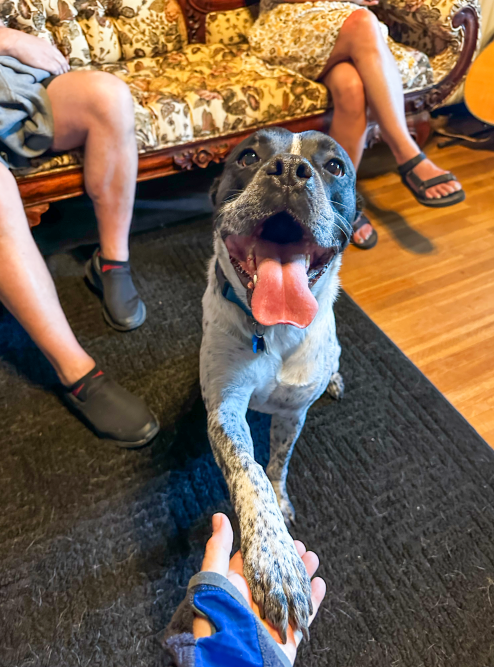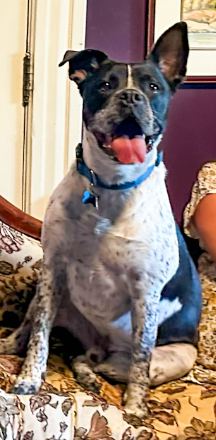Hi there! I hope you are having a fulfilling day?
I want to thank you for your interest in my website and more precisely in my art. It means a lot to know that you are following me. Here, you will find an assortment of blog posts. They are not always strictly about art. Sometimes they express random thoughts, sometimes they will talk about how I came to paint a particular scene. And sometimes they contain a review of an event I was in. I hope you will find it interesting and, if you like, feel free to comment on any of the posts!
Have a creative, happy day!
Nicky
- Doggy charms… meet Sarge!
December 3, 2025

Sarge at attention when he spots something interesting… Every painting has a story. So does this one. Every now and then a friend shows me a picture and it awakens an urge to paint the subject in that picture. That happened when a fellow St. Thomas artist was proudly showing me an image of his new doggy friend Sarge. I was instantly charmed and understood why he adopted Sarge.
I asked if I could paint the dog and when he said yes I boldly invited myself to his house, because I rarely paint subjects I have not personally met. Especially with animals, one can get a completely wrong impression of shape and character if all you’d have to go by was one image. And lo and behold, was I glad I had stuck to my normal routine, because Sarge was not at all what I expected!
I had envisioned a cute little dog, maybe not even knee-high. The kind of dog you pick up and take with you on the train or the plane. Upon entering the house, my host warned me that Sarge might come at me in full force and possibly even knock me off my feet. I raised my eyebrows and secretly thought to myself: that’s a bit rich for a small dog?, and said that I was quite okay with dogs, as long as they were not aggressive.
BIG personality enters the room!
And then this lightning fast blur of black and white fur entered from the back yard, mouth open, red tongue flopping up and down, all muscles and enthusiastic panting, almost knocking me off my feet with a cartoon-like sitting stop. Meet Sarge! He instantly charmed himself into my heart. This was not just a big dog with enough energy to supply a whole village of dogs, it was also a dog with the sweetest character I have seen in a long time. Sarge totally smashed it and as I was making some pictures of my own, he was pawing me for attention and just gobbled up whatever cuddles were available. And there were a lot!


His owner told me that when he bought his chaise longue, he had solemnly sworn that no dog would ever be allowed to sit on it. Right. Wrong. Sarge has claimed it as one of his favourite spots in the house. In my painting I took some creative liberties with this couch, but other than that, this painting captures the spirit of this wonderful dog. Thanks, Dennis, for letting me paint him!
The Five Latest Posts
- Doggy charms… meet Sarge!
- Love being in ‘The Red Show’ at the Port Stanley Windjammer Inn! Come see them!
- Article in local magazine
- After the Studio Tour…
- HAIR!!
Posts Archive
- December 2025
- November 2025
- October 2025
- September 2025
- August 2025
- July 2025
- June 2025
- May 2025
- April 2025
- March 2025
- February 2025
- December 2024
- November 2024
- October 2024
- September 2024
- August 2024
- July 2024
- May 2024
- April 2024
- February 2024
- December 2023
- November 2023
- October 2023
- August 2023
- July 2023
- June 2023
- May 2023
- April 2023
- March 2023
- February 2023
- January 2023
- December 2022
- November 2022
- October 2022
- September 2022
- August 2022
- July 2022
- June 2022
- May 2022
